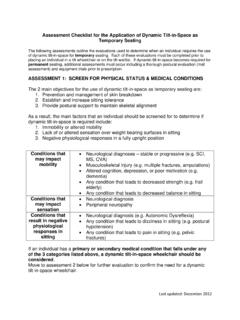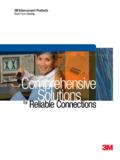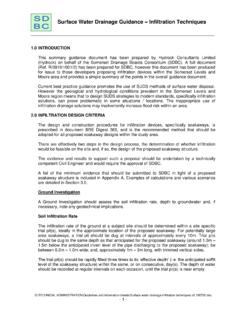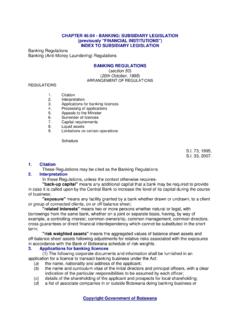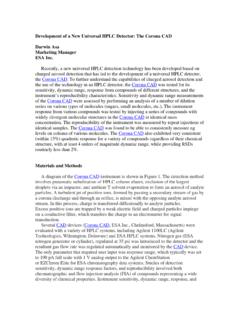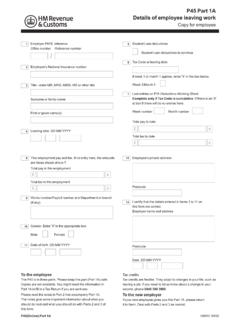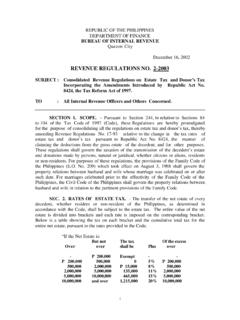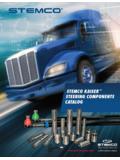Transcription of Interface Pressure Mapping (IPM) Clinical Use of …
1 Interface Pressure Mapping (IPM). Clinical Use of the Literature Laura Titus OT Reg.(Ont.), PhD Student, Jan Miller Polgar PhD, OT Reg.(Ont.), FCAOT. SJHC-Parkwood Seating Program London Ontario Faculty of Health and Rehabilitation Sciences, University of Western Ontario Objectives 1) Participants will be able to discuss and explain the current literature of Interface Pressure Mapping as it applies to Clinical practice. 2) Participants will be able to apply literature findings to Clinical practice. 3) Participants will discuss and network regarding Clinical use of the IPM. Interface Pressure Mapping by Laura Titus OT Reg. (Ont.) 2009. The real objectives 1. Share information about Clinical use of Interface Pressure Mapping from the literature.
2 2. Discuss the benefits and limits we experience clinically with IPM. 3. What else needs to be done in this area to help clinicians use IPM with confidence? Interface Pressure Mapping by Laura Titus OT Reg. (Ont.) 2009. Outline of presentation Discuss Learn from each other Network Decide if there are next steps Interface Pressure Mapping by Laura Titus OT Reg. (Ont.) 2009. Background of the literature search Searched using variations of Interface Pressure Mapping , with wheelchairs and/or seating. Reviewed all articles regardless of dates but noted dates for changes in recommendations/methods of use Interface Pressure Mapping by Laura Titus OT Reg. (Ont.) 2009. Limitations Clinical bias in review of articles May not have captured every single article yet.
3 Did not systematically review quality of the studies. Not an expert on IPM have just read a lot of articles and used IPM clinically. Interface Pressure Mapping by Laura Titus OT Reg. (Ont.) 2009. Clinical Uses identified in the literature 1. Education of client 2. Relative comparisons on different cushions for the same person 3. Relative Pressure changes with different body orientations in space ( tilt, squeeze, reach). 4. Relative Pressure changes with different body postures such as leaning or pelvic obliquity Interface Pressure Mapping by Laura Titus OT Reg. (Ont.) 2009. Clinical Uses identified in the literature 1. Education of client. visual display provides feedback impact of Pressure Pressure changes with weight shifting and other Pressure relieving techniques 2.
4 Relative Pressure comparisons on different cushion for the same person. Comparisons are not absolute, can only make relative comparisons. Suggested that IPM is more useful to identify inappropriate cushion choices rather than identifying appropriate cushions. Consider all sitting surfaces it is not always the cushion. Interface Pressure Mapping by Laura Titus OT Reg. (Ont.) 2009. Clinical Uses identified in the literature 3. Relative Pressure changes with different body orientations in space ( tilt, squeeze, reach). The IPM is useful to assist in determining effectiveness of changes in body posture or orientation in space on Pressure management. 4. Relative Pressure changes with different body postures such as leaning or pelvic obliquity - Posture/positioning impact Pressure distribution and Pressure peaks Interface Pressure Mapping by Laura Titus OT Reg.
5 (Ont.) 2009. Issues with IPM use Different goals between researchers and clinicians therefore each use different approaches Variations in method of use across clinicians Variations in interpretation of data No standard methodological protocol for use Interface Pressure Mapping by Laura Titus OT Reg. (Ont.) 2009. Issues with IPM use Reliability of Pressure reading values differs Differences between the IPM systems themselves limit ability to compare findings No absolute values can only use relative comparisons. Interface Pressure Mapping by Laura Titus OT Reg. (Ont.) 2009. Issues with IPM use Hammocking Hammocking, or bridging, support surfaces contours may effect the Pressure distribution being measured so the mat itself may effect Pressure readings Interface Pressure Mapping by Laura Titus OT Reg.
6 (Ont.) 2009. Issues with IPM use Hysteresis and creep Hysteresis = tendency for sensors to under read when loads are applied and over read when loads are reduced Creep = Pressure values increase over time under constant load Interface Pressure Mapping by Laura Titus OT Reg. (Ont.) 2009. 4 key underlying themes Be consistent in all aspects of IPM use. Understand what you are measuring with IPM. Use IPM as part of a full assessment, not the only part. Use the image and the numbers to get the most out of interpretation. Interface Pressure Mapping by Laura Titus OT Reg. (Ont.) 2009. Consistency of Use: Reliability Reliability who needs it? you do Reliability = consistency of use Process Settling time Data collection Allows greater confidence in results of one session for one person Interface Pressure Mapping by Laura Titus OT Reg.
7 (Ont.) 2009. Consistency of Use: Protocols Swaine, J. & Stacey, M. (2006). Development of the Calgary Interface Pressure Mapping Protocol For Sitting. 22nd International Seating Symposium, British Columbia, Canada. ISO Working Group Clinical Guidelines O_Working_Group_Clinical_Use_Guidelines FSA Point Form Clinical Protocol (courtesy of Jean Minkel MS,PT). int_Form_Clinical_Protocol Interface Pressure Mapping by Laura Titus OT Reg. (Ont.) 2009. Consistency of Use: Reliability Reliability who needs it? you do Reliability = consistency of use Process Settling time Data collection Allows greater confidence in results of one session for one person Interface Pressure Mapping by Laura Titus OT Reg. (Ont.) 2009. Consistency of Use: Settling Time and Creep Creep = Pressure values over time under constant load cushion creep client tissue creep How long to settle: minimum and maximum 6-8 minutes from literature limitations of studies Expert opinion when values stabilize ; use consist settle time per person to compare cushions No maximums noted impact of creep over long time?
8 Interface Pressure Mapping by Laura Titus OT Reg. (Ont.) 2009. Consistency of Use: Reliability Reliability who needs it? you do Reliability = consistency of use Process Settling time Data collection Allows greater confidence in results per person per session. Interface Pressure Mapping by Laura Titus OT Reg. (Ont.) 2009. Consistency of Use: Calibration Reduces effect of sensor creep Determines accuracy of values/colours Full versus quick calibration Reduces the effect of hysteresis Interface Pressure Mapping by Laura Titus OT Reg. (Ont.) 2009. Understand what you are measuring with IPM (and what you are not measuring). Pressure Tissue tolerance Interface Pressure Mapping by Laura Titus OT Reg. (Ont.) 2009. Measuring with IPM: Pressure Pressure = force/area (magnitude) x time (duration).
9 Highest over bony prominences Highest proportion of body weight is through pelvis when sitting Short duration & high load = long duration and low load Deep, Interface , shear, friction Interface Pressure Mapping by Laura Titus OT Reg. (Ont.) 2009. Measuring with IPM: Pressure Tissue tolerance is the ability of tissue to tolerate different amounts of load/ Pressure (magnitude). over different lengths of time (duration). Varies across people due to: differences in condition of the tissue (eg skin elasticity, muscle atrophy, vascular changes, amount of fat). Age Tissue location on body Hydration Metabolism Mobility sensation Interface Pressure Mapping by Laura Titus OT Reg. (Ont.) 2009. Measuring with IPM: Pressure Many factors that contribute to Pressure ulcers that need to be considered One article indicated over 200 contributing factors for Pressure ulcers Many identified intrinsic and extrinsic factors IPM measures only one factor Pressure at the Interface between the sitting surface and the client Interface Pressure Mapping by Laura Titus OT Reg.
10 (Ont.) 2009. Measuring with IPM: Because of Pressure Issues No safe Interface Pressure threshold in seating has been determined for all people. Cannot compare Pressure readings across people Cannot compare cushions across people Can only use IPM to make relative comparisons not definitive decisions Interface Pressure Mapping by Laura Titus OT Reg. (Ont.) 2009. Measuring with IPM: Because of Pressure Issues "All of the Pressure ulcer risk factors tend to influence the tissue's ability to withstand load. Therefore, we cannot use Interface Pressure to make definitive decisions on cushion effectiveness, but we can use pressures to make relative comparisons.". (Sprigle et al 2003,p50). Interface Pressure Mapping by Laura Titus OT Reg. (Ont.)

